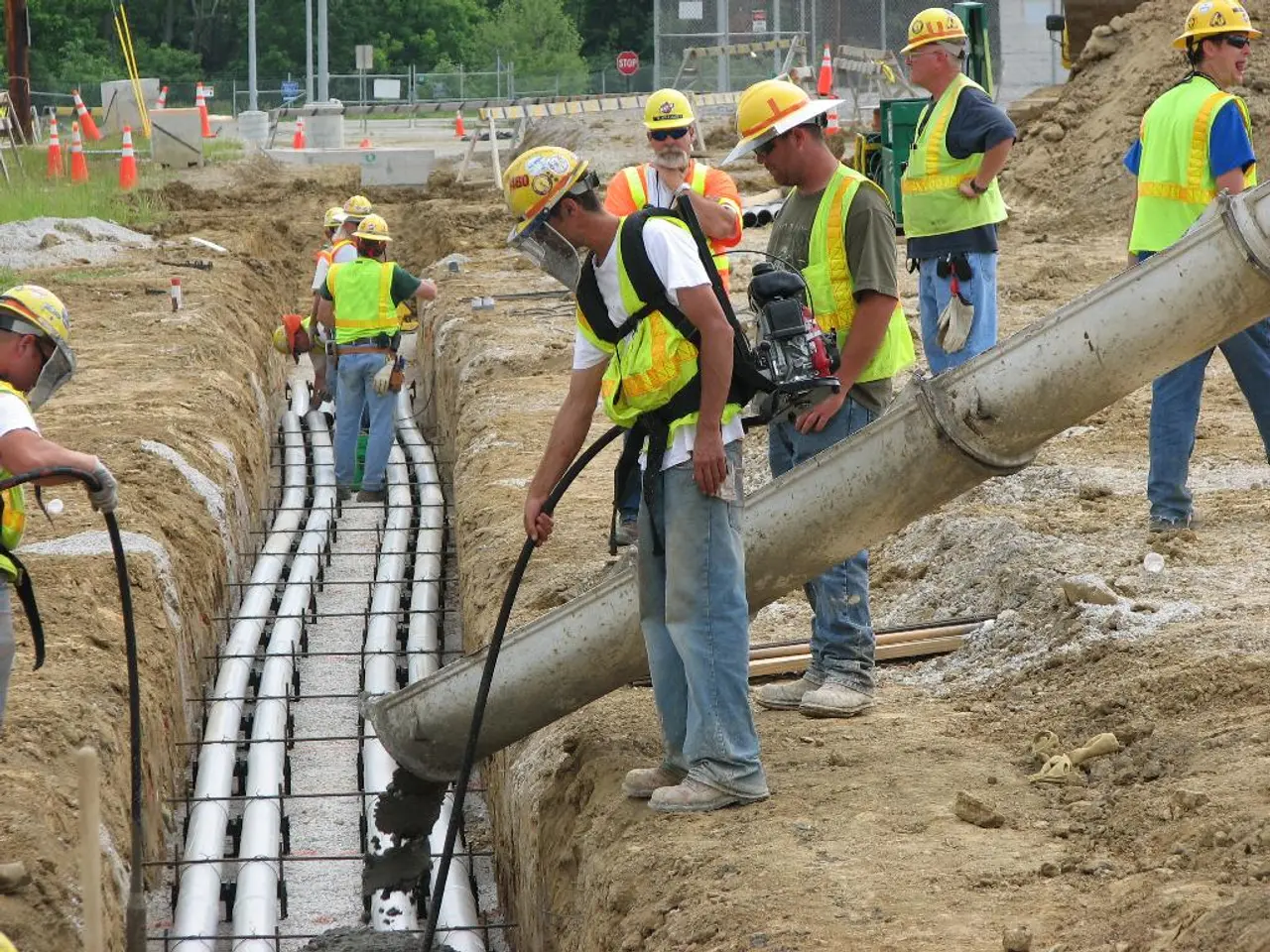Prevention of Secondary Injuries through Safe Ambulation and Workspaces
In farming environments, where various surfaces and conditions pose potential hazards, it is crucial to prioritise safety for individuals with mobility limitations. By adopting a combination of practical measures, farming environments can become safer, reducing the risk of slips, trips, and falls while supporting independence and productivity.
Regular risk assessments are essential to identify unique hazards that may affect those with mobility limitations. These assessments should take into account factors such as slower reaction times, reduced stability, and specific farming surfaces. By addressing these issues, potential risks can be minimised [1].
Maintaining walking and working surfaces is another key aspect of safety. Surfaces should be kept even and free of hazards such as bumps, cracks, or loose materials to prevent trips and falls. Prompt repairs to uneven or damaged ground are essential, and in areas prone to moisture or spills, slip-resistant mats or coatings can be installed [2].
Proper footwear is vital for enhancing grip and reducing slips. Footwear should be suitable for the variety of farming surfaces encountered, from muddy fields to wet floors and hard compact soil [2].
Clear walkways are essential to prevent tripping hazards. All areas should be well-lit and clutter-free, ensuring that obstructions such as extension cords, power cords, hoses, boxes, or tools are removed [3].
Assistive devices tailored to the individual, such as canes or walkers designed for outdoor and uneven terrain, can provide additional support. Training from mobility specialists is recommended to ensure effective use [4].
Specific training for workers with mobility limitations on how to navigate different surfaces safely, recognise and avoid hazards, and use assistive devices effectively is also crucial [4].
For lone workers or those operating in remote farm areas, regular check-ins via reliable communication devices (e.g., cell phones, radios) are essential. Emergency protocols and automatic alert systems can offer additional protection in case of falls or other incidents [3].
Workplace design can also contribute to safety. Farming tasks and workflows should be adjusted to reduce the need for excessive walking or standing on hazardous surfaces. Seating options for tasks that can be performed while seated and organised work areas to minimise movement over difficult terrain are beneficial [1][2][3][4].
Simple guidelines can also help individuals with mobility issues, diminished balance, arthritis, or hip or knee replacements reduce their risk of injury. These include using slip-resistant matting or providing textured surfaces in potentially wet areas, wearing proper footwear for current weather conditions and the surfaces being travelled, minimising distractions, and removing obstructions from travel areas [5].
By integrating these practices—surface safety, appropriate footwear, assistive technologies, targeted training, and communication measures—farming environments can become safer for individuals with mobility limitations, ultimately reducing the risk of slips, trips, and falls while supporting independence and productivity [1][2][3][4].
Additionally, resources such as AgrAbility offer information and referral materials, on-site assessment, technical assistance, and awareness in preventing secondary injuries for Ohio's farmers and farm families coping with a disability or long-term health condition [6].
Safety precautions need to be taken even at heights less than 10 feet. Staying alert to parts projecting from machines or equipment, creating smooth transitions from loose gravel to other surfaces, and utilising handrails or grab bars in areas where there are stairs or changes in elevation are all important considerations [7].
Proper housekeeping and lighting of working and walking surfaces, as well as recognising and cleaning up contaminants on surfaces, can prevent most slips, trips, and falls [8].
By prioritising safety, farming environments can become more accessible and enjoyable for all individuals, promoting a safer and more productive workforce.
- Incorporating science in the design of farming surfaces can help create slip-resistant and even working conditions, promoting workplace wellness for individuals with mobility limitations.
- To ensure the health and wellness of all workers, agricultural practices should consider fitness and exercise routines that can enhance balance and mobility, complementing safety measures within farming environments.
- By adopting a holistic approach that considers soil conditions, workplace design, and employee training in agriculture, we can foster a culture of safety, health, and wellness, enhancing productivity for individuals with mobility limitations.




